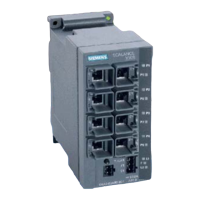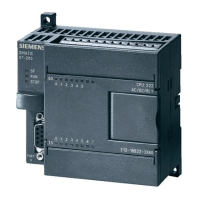Product Overview
1.5 Using the TD Device to Access Screens and Alarms
Text Display (TD) User Manual
20 System Manual, 08/2008, A5E00765548-03
7'&
0
7H[WGLVSOD\DUHD
$UURZEXWWRQV
&RQILJXUDEOHEXWWRQV
6WDQGDUG)DFHSODWH7'&
)
)
)
)
)
)
)
)
)
)
)
)
)
)
6+,)7
(6&
(17(5
6+,)7(17(5DQG(6&
)
)
6,(0(16
)
)
)
)
)
)
)
)
6+,)7
(17(5
(6&
6WDQGDUG)DFHSODWH7'&
7H[WGLVSOD\DUHD $UURZEXWWRQV
&RQILJXUDEOHEXWWRQV
DQG6+,)7
(17(5
DQG(6&
6WDQGDUG)DFHSODWH7'&
6,(0(16
7'&
) )
(17(5
(6&
7H[WGLVSOD\DUHD $UURZEXWWRQV
&RQILJXUDEOHEXWWRQV
(17(5
DQG(6&
6,(0(16
6,(0(16
)
)
)
)
)
)
)
)
6+,)7
(17(5
(6&
6WDQGDUG)DFHSODWH7'
7H[WGLVSOD\DUHD $UURZEXWWRQV
&RQILJXUDEOHEXWWRQV
DQG6+,)7
(17(5
DQG(6&
Figure 1-2 Standard Keypad Configuration for the TD Devices
Dividing Information into Screens and Bit-Enabled Alarms
As shown in Figure 1-3, you can configure the TD device to display screens (which are
initiated by operator action) and bit-enabled alarms (which are initiated by the S7-200 CPU).
● Screens: You can create screens that allow the operator (using the TD device) to initiate
the interaction with the S7-200 CPU. With the TD device, you can configure a user menu
(up to 8 entries or groups for the TD 200C, TD 200, and TD400C, and up to 4 entries or
groups for the TD 100C) that provides a hierarchy for the screens. You can create up to 8
screens for each menu item or group.
● Alarms: You can create alarm messages that allow the user program in the S7-200 CPU
to initiate interaction with the operator by displaying a message on the TD device.
During the configuration of the TD device, you also designate which type of message
(screens or alarms) will be the default display mode for the TD device. After power-up, the
TD device goes to the default display mode. Also, the TD device returns to the default
display mode after a period of inactivity (if no buttons have been pressed for one minute).

